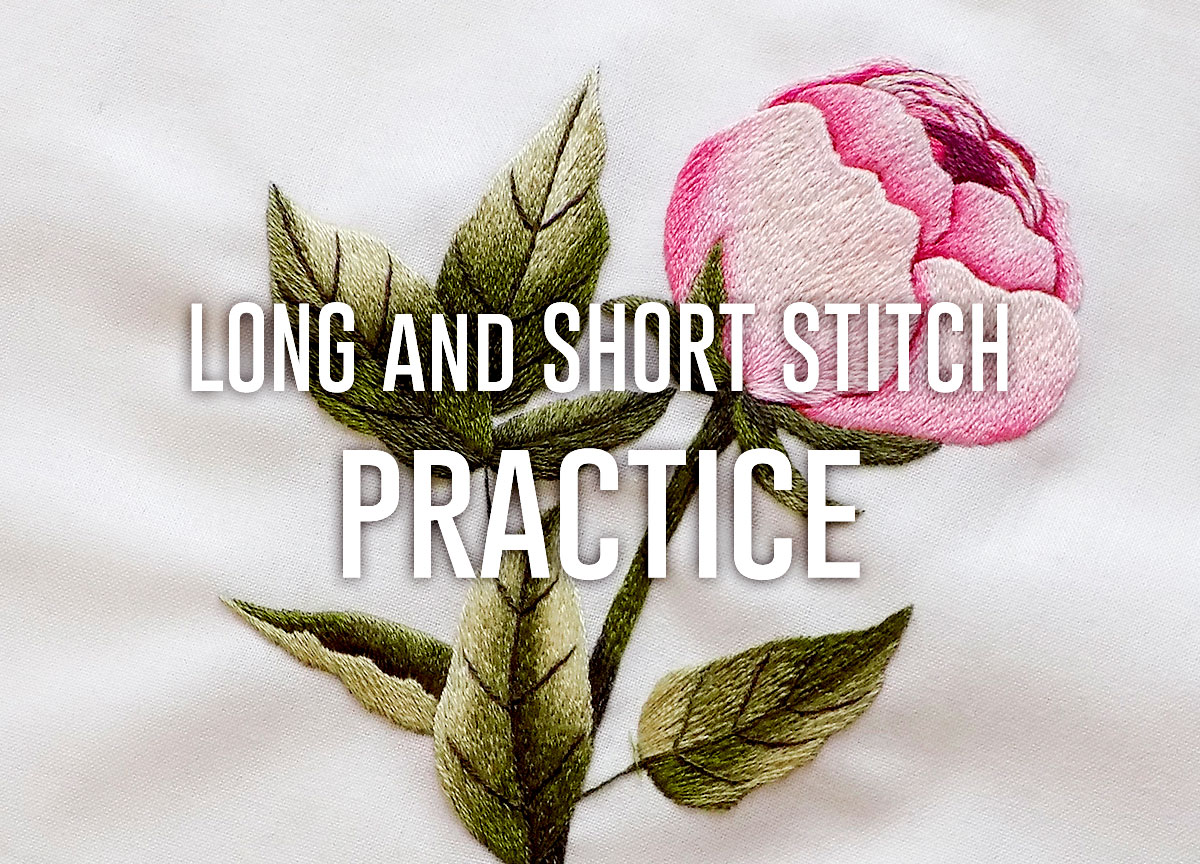The Ultimate Guide to Long and Short stitch
As you probably know, I really like the embroidery techniques called long and short stitches and I hope that more and more people will love them and see that it is not so scary and not so difficult.
Well, it's not that easy, and it takes time and patience to befriend him. But it's really worth it, isn't it?
Today on this blog I have a lot of material on long and short stitches and crafts. So I decided to summarize everything in this post for easy access!
Save it to Pinterest or bookmark your browser. When I write something new about sewing or long short stitches, I add it here :)
Tutorial on long and short stitches
Let's start with the basics. I recommend going to the short and long tutorial and trying to repeat each step from there . There are some tips at the end of this article, so be sure to check them out.
Personally, I think the two most important points to understand your long and short point of view are:
- Keep a constant stitch direction
- Change the "levels" you start with
If the direction of your stitches is inconsistent, this is usually noticeable and disrupts the overall "flow" of your sewing. Unless, of course, you consciously decide to interrupt this flow for a specific artistic purpose.
As for the second point... In my opinion (unlike many other artists), the length of the stitches should not change by itself. Not "levels" where you start earning points.
And I learned it on my own, and it actually seemed a lot easier. I will cover this in more detail in my online DIY course as the video makes the process easier as it shows how it works.
But in short, you can leave the stitch length the same, or they can end up on the same level. It really doesn't change anything. What matters is where you start these points . And to make your mix smoother, you need at least 2 of them, but it's better to start with those 3-4 "level" points. And then, whatever you want to do, make sure they land well below the mark on the next line (I link to another article below titled "Fixing Your Lines").
Let's say you've already edited a small sheet in the tutorial.
Congratulations if you feel the same!
Otherwise, here is a new product just for you! I mean that I wrote this tutorial to avoid embroidery at the beginning of the path, you know what I mean?
But let's face it, this exercise is a pretty isolated practice. The real questions and problems will arise when you actually use them in your practice . And to make your exercise a success, I have prepared some sewing tips , which I will list below.
Practice long and short stitches
If you need ideas where to do this exercise with long and short stitches, feeling like you're missing out on too much, I've already done a few stitches and am ready when you want!
The great thing about these Stitch Alongs is that you have detailed step by step images for each design step, so the visual support is pretty solid. (By the way, if you have any suggestions for a new Stitch Along, feel free to leave your ideas in the comments.)
I'll list all the current stitches in this blog in order of difficulty (from easiest to hardest):
If you'd like more learning guidance and prefer videos to images, be sure to check out the Needle Drawing for Beginners course. There we work on specific exercises that simulate various realistic situations that you may encounter in long and short stitches, and all the material is presented in special video tutorials.
Long and short spikes
And, as I said, when you start practicing long and short stitches, new questions and confusing moments will inevitably arise. I try to hide it a little and have made a special tag for these displays : needle paint dots .
You can go to the tag and take a look, but for simplicity, I will list all the posts here (and add new ones here, so I recommend saving):
- Color mixing tips (color theory and case studies that work best with color combinations)
- Leaf practice (another example of color combinations)
- Long and short dot levels (a case of "levels" to start your points)
- Diagonal Shading (Step by Step Guide)
- Shadow spots (step by step instructions)
- Is it worth erasing the shadow? (Consider one of the multi-row long and short stitches and learn the pros and cons.)
- You should check out the tutorials on Youtube (I wonder how much I liked the visual tutorial you saw)
- The Importance of Good Leadership (case study with examples and tips)
- Fill the shape with long and short seams (can also be used as a solid color fill)
- The Secret to Correct Lines (how to make sure your lines match the pattern)
- Video of the process on YouTube
- More layers = better shade? (Does the number of lines and colors affect your color result?)
So here is your guide!
I know this bunch of information can be amazing, but don't get discouraged, okay? Learn step by step and track your practice. You will achieve your goal if you move, even if only a few centimeters a day.
And above all, enjoy it! :)




